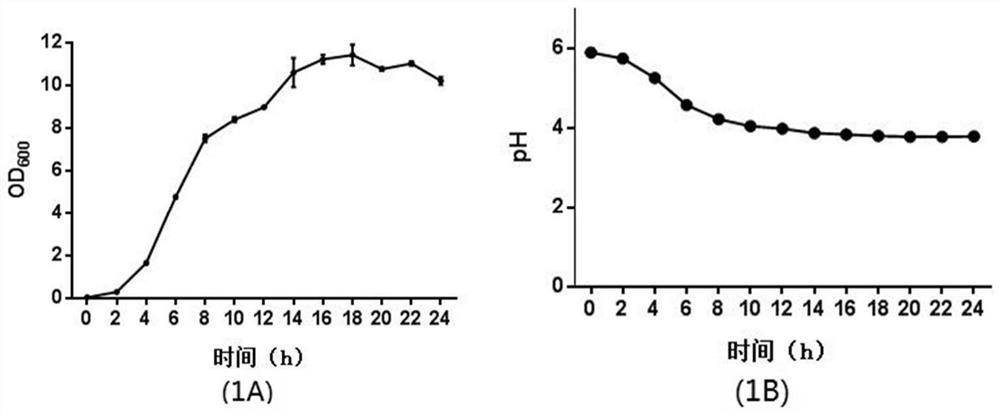Exopolysaccharide produced by lactobacillus plantarum 589, preparation method, application and composition containing lactobacillus plantarum or exopolysaccharide
A technology of Lactobacillus plantarum and exopolysaccharide, which is applied in the field of biological food and can solve problems that need further research
- Summary
- Abstract
- Description
- Claims
- Application Information
AI Technical Summary
Problems solved by technology
Method used
Image
Examples
Embodiment 1
[0044] An exopolysaccharide produced by Lactobacillus plantarum 589, which was isolated by the inventor from a Sichuan pickle sample, identified as Lactobacillus plantarum (Lactobacillus plantarum), named Lactobacillus plantarum 589, and was released on May 25, 2018 It is preserved in the General Microorganism Culture Collection Center of China Microbiology Culture Collection Management Committee, and the microorganism preservation number is CGMCC No.15811, which is isolated from a sample of Sichuan pickles in my country by the inventor.
Embodiment 2
[0046] The preparation method of the exopolysaccharide produced by Lactobacillus plantarum 589 comprises the following steps:
[0047] 1) Inoculate the strain of Lactobacillus plantarum 589 in 100 mL of MRS liquid medium at an inoculum amount of 1%, and cultivate it in a constant temperature incubator at 37°C for 14 hours to perform a first-generation activation; Inoculate in 100mL of MRS liquid medium, culture in a constant temperature incubator at 37°C for 14 hours for second-generation activation, and obtain activated bacterial liquid;
[0048] 2) Inoculate the activated bacterial solution of Lactobacillus plantarum 589 in 1L of MRS liquid medium according to the inoculation amount of 1%, and ferment and cultivate it in a constant temperature incubator at 37°C for 24 hours;
[0049] 3) Collect the bacterium liquid of Lactobacillus plantarum 589 after fermentation and culture, boil for 10 minutes to sterilize, then centrifuge to collect the supernatant, add a trichloroacetic...
Embodiment 3
[0052] The preparation method of the exopolysaccharide produced by Lactobacillus plantarum 589 comprises the following steps:
[0053] 1) Cultivate the strain of Lactobacillus plantarum 589 in a constant temperature incubator at 35°C for 20 hours for first-generation activation; then inoculate the bacterial solution obtained from the first-generation activation into 80 mL of MRS liquid medium at a constant temperature of 35°C with an inoculum of 0.8%. Cultivate in the incubator for 20 hours for second-generation activation to obtain activated bacterial liquid;
[0054] 2) Inoculate the activated bacterial liquid of Lactobacillus plantarum 589 in 0.8L MRS liquid medium according to the inoculum size of 0.8%, and ferment and cultivate it in a constant temperature incubator at 35°C for 30h;
[0055] 3) Collect the bacterial liquid of Lactobacillus plantarum 589 after fermentation and culture, boil for 10 minutes to sterilize, then centrifuge to collect the supernatant, and add a ...
PUM
 Login to View More
Login to View More Abstract
Description
Claims
Application Information
 Login to View More
Login to View More - R&D
- Intellectual Property
- Life Sciences
- Materials
- Tech Scout
- Unparalleled Data Quality
- Higher Quality Content
- 60% Fewer Hallucinations
Browse by: Latest US Patents, China's latest patents, Technical Efficacy Thesaurus, Application Domain, Technology Topic, Popular Technical Reports.
© 2025 PatSnap. All rights reserved.Legal|Privacy policy|Modern Slavery Act Transparency Statement|Sitemap|About US| Contact US: help@patsnap.com



